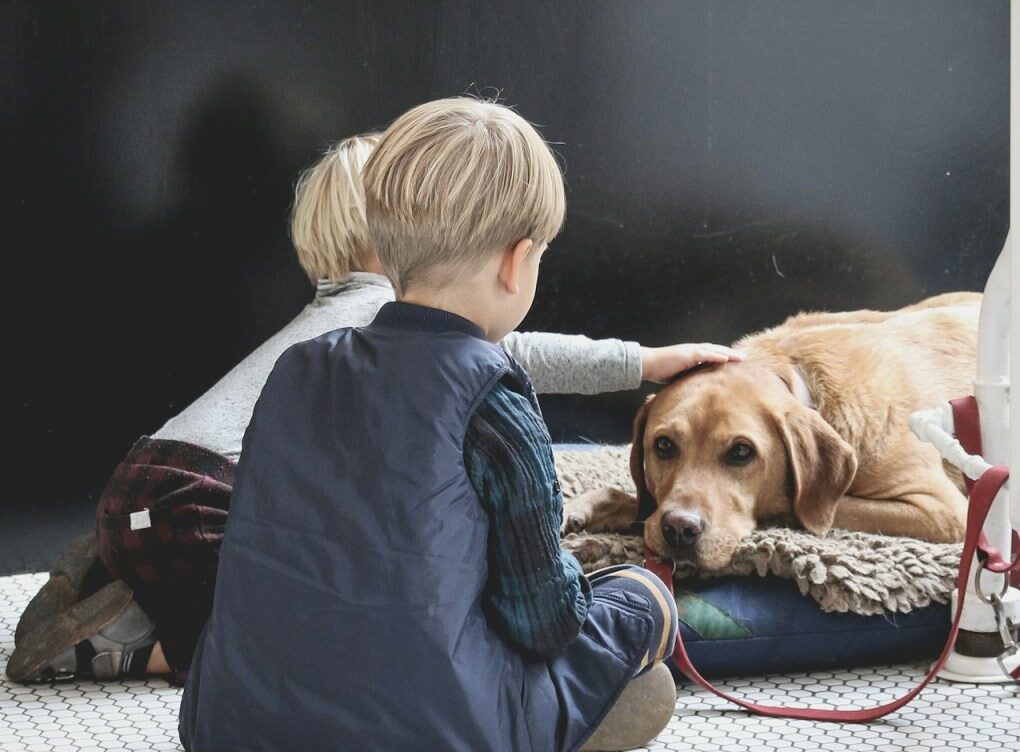
Signs Your Dog Might Bite & How to Protect Children
Dogs are beloved family members, offering companionship, love, and loyalty. However, even the most well-behaved dog has the potential to bite under certain circumstances. Understanding the warning signs of aggression and learning how to protect children from dog bites is essential for maintaining a safe and happy home environment. By recognizing early indicators of stress or discomfort in dogs and educating children on appropriate interactions, families can prevent potentially dangerous situations and foster a respectful relationship between dogs and young family members.
Understanding Why Dogs Bite
Dogs bite for various reasons, and it is not always due to aggression. In many cases, biting is a defensive reaction to fear, pain, or stress. Some common reasons why dogs bite include fear and anxiety, territorial behavior, overstimulation, frustration, and medical issues. Fearful dogs may bite when they feel trapped or threatened, especially if they have not been socialized properly. Dogs can also become territorial over their space, food, toys, or family members, leading to defensive aggression. Additionally, a dog that has been playing too roughly or overstimulated may react with a bite if they become overwhelmed. Puppies, in particular, often use their mouths to explore their environment, but without proper training, they may continue biting into adulthood. Frustration and medical conditions, such as arthritis or dental pain, can also contribute to biting behavior in dogs.
Signs That a Dog Might Bite
Recognizing the warning signs that a dog is about to bite is crucial in preventing injuries. Dogs often give subtle signals before resorting to aggression. One of the most common signs is a stiff body posture. If a dog suddenly freezes or stiffens when approached, it may be a sign that they feel threatened and could lash out. Growling, snarling, or baring teeth are clear indicators that a dog is uncomfortable or warning others to back away. Additionally, pinned-back ears, intense staring, raised hackles, and excessive yawning or lip licking are all signs of stress in dogs. If a dog suddenly turns their head away, avoids eye contact, or tucks their tail, they may be feeling anxious and should not be provoked. Recognizing these early signs allows pet owners to intervene before a situation escalates.
How to Protect Children from Dog Bites
Children are often at higher risk of being bitten by dogs due to their small size, high energy levels, and lack of awareness of canine body language. Teaching children how to safely interact with dogs is essential in preventing bites and promoting a positive relationship between them and their furry companions. One of the most important rules is to always supervise interactions between dogs and children. Even the most gentle dog can become overwhelmed by a child’s unpredictable movements, so it is crucial that an adult is present to monitor their interactions.
Children should also be taught to respect a dog’s space. They should never disturb a dog while they are eating, sleeping, or caring for puppies. Many bites occur when a child unknowingly invades a dog’s personal space, causing the dog to react defensively. Instructing children to allow a dog to come to them rather than forcing an interaction can help reduce the likelihood of a bite. Additionally, children should be educated on how to properly pet a dog. Quick, rough movements can startle dogs, so it is important to show children how to approach calmly and gently stroke a dog’s back or chest instead of reaching over their head.
Another essential precaution is teaching children how to behave around unfamiliar dogs. They should always ask for permission before petting someone else’s dog and never attempt to touch a dog that is behind a fence or tied up, as these situations can make dogs feel trapped or defensive. Running away from a dog or making sudden loud noises can also trigger a chase instinct, leading to potential injuries. Instead, children should be taught to stand still like a “tree” if a dog approaches them in an overly excited or aggressive manner. Keeping their arms crossed, avoiding eye contact, and remaining calm can help de-escalate the situation.
Steps to Take If a Dog Shows Aggressive Behavior
If a dog displays signs of aggression, it is important to address the issue promptly. The first step is to remove the child from the situation to ensure their safety. Avoid punishing the dog, as this can increase fear and worsen aggression. Instead, assess the potential causes of the behavior. If a dog frequently shows signs of stress or fear-based aggression, consulting a professional dog trainer or behaviorist can provide valuable guidance. Positive reinforcement training methods can help teach alternative behaviors and build confidence in anxious dogs.
Additionally, ensuring that a dog receives proper socialization and exercise can reduce stress and aggression. Regular walks, mental stimulation through puzzle toys, and consistent training sessions can help redirect excess energy into positive activities. If a dog is exhibiting sudden aggressive behavior, a visit to the veterinarian may be necessary to rule out any underlying medical conditions that could be causing discomfort.
Final Thoughts
While dogs are loving and loyal companions, it is essential to remember that they have instincts and boundaries that must be respected. Understanding the warning signs that a dog might bite and educating children on safe interactions can significantly reduce the risk of injuries. By fostering a respectful and positive relationship between children and dogs, families can create a safe and harmonious environment for everyone involved. With proper training, supervision, and awareness, both children and their canine companions can coexist happily and safely.
